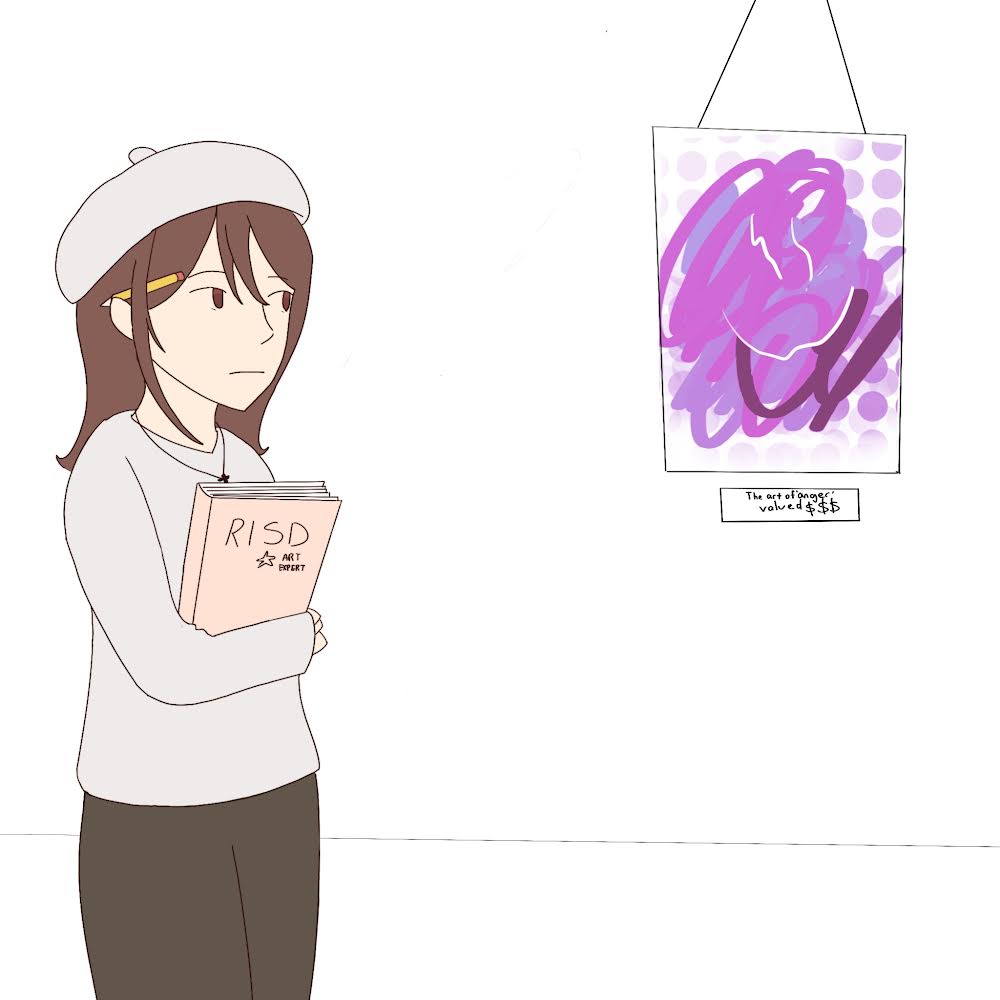You’re in New York City with a friend, waiting for a connecting flight to Los Angeles. It doesn’t depart for a few hours, so both of you decide to check out the Museum of Modern Art. One piece hidden behind a striped canvas tarp had a crowd quickly growing around it. Wow, this art piece must be impressive, you think to yourself. Finally, after waiting for a few minutes, you ask, “When will they show us the painting?”
Your friend, confused, responds, “That is the painting.”
Many of us have had an experience like this. Maybe it was as a child, asking your parents
why a mess of paint on canvas belongs in a museum. Or maybe it was when you were older, perusing the galleries of your local museum, frustrated by the lack of meaning in one of these pieces. Modern art can seem unfulfilling, sometimes even incomplete. This has understandably led many to ask the essential question: Is modern art really art? The answer is yes. Modern art has more meaning than just paint on a canvas. It allows the artist to convey ideas in a distinctive way, which, therefore, makes it art.
Modern art strips away the extraneous information that makes the meaning of a conventional art piece hard to understand. By embodying entirely new formats, configurations, and structures that a simple true-to-life rendition lacks, modern art can show us how varied and diverse art can be. More practically, it gets us to question what we consider art. How many of us have looked at an art piece and asked, Why is this art? By provoking this question, modern art pushes us to think more about the piece—something many conventional paintings, however excellently rendered, fail to do. While modern art lacks some of the effort or intricacy that a work of art by Michelangelo or Van Gogh may possess, there is a sort of simple theatricality in its execution.
In addition, modern art helps us look society in the eye and frees our views from clutter or fabricated symbolism. Yes, it could be simple, lackluster, even ugly or lewd (think “Demoiselles d’Avignon”), but perhaps it causes us to analyze a piece at a deeper level. Also, if writing concisely is a celebrated skill, why isn’t the same simplicity recognized benevolently in works of art? The hidden meanings in Shakespeare’s plays and among other poems is what makes them distinct from writing that we might consider “just average.”
Yet, critics of modern art will argue that it doesn’t convey any meaning. Traditional art often conveys a plethora of information. A work such as Van Gogh’s famous piece Starry Night is a beautiful collection of a variety of colors. The distinct and detailed objects within the painting, such as the tree, convey death, while the stars convey hope. A painting such as Starry Night is seen as one of the most compelling art pieces today. Opposers argue that modern art lacks this deeper meaning that many people long for.
Although modern art might not communicate a plethora of information, that doesn’t make it meaningless. As a society, we should learn to appreciate the simplicity that modern art brings forth to us. Recognizing the beauty in minimalistic works is a skill that should be cherished: in today’s relentlessly complex world, sometimes a few abstract shapes are what we need.



